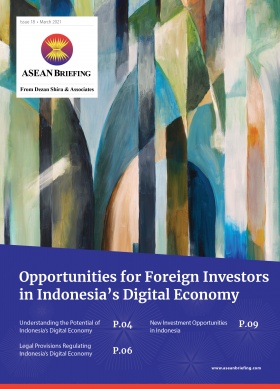Philippines Central Bank to Launch Digital Currency Pilot Program
The central bank of the Philippines (Bangko Sentral ng Pilipinas (BSP)) will launch a pilot program for a Central Bank Digital Currency (CBDC). The program, named Project CBDCPh, aims to bring hands-on knowledge of the key aspects of CBDC’s nature and its implication for the country’s financial system.
According to a report released by the ASEAN+3 Macroeconomic Research Office (AMRO), some 40 countries are undertaking research on CBDCs and three central banks have launched CBDCs for commercial use. 14 countries have launched a piloted testing scheme for CBDCs while a further 16 countries are in the proof-of-concept stage of CBDC development. Another 40 countries are in the research stage, such as the Philippines.
What is a CBDC?
A CBDC is a digital form of money issued by a country’s central bank and as such, would be a liability to that central bank.
There are two types of CBDCs: wholesale CBDCs and retail CBDCs.
Wholesale CBDCs are exclusive to financial institutions and used in transactions between financial institutions and with central banks. Access to wholesale CBDCs is available 24 hours a day, seven days a week, unlike central bank money, which is limited to the central bank’s opening hours.
Retail CBDCs, as the name suggests, cater to retail transactions, and can be used by individuals, corporations, and small businesses for daily transactions.
Retail CBDCs can be either token-based or account-based – the key distinction is that token-based CBDCs rely on the payee to verify the validity of the transaction, while account-based CBDCs depend on verifying the identity of the account holder.
What is Project CBDCPh?
Project CBDCPh is an exploratory study implemented by the BSP to provide a comprehensive outlook on the potential implication of CBDCs on the Philippines’ financial system. Project CBDCPh hopes to identify key aspects of CBDCs and address frictions in the current national payment system, particularly in areas of safety, efficiency, and reliability.
In the short-term, the BSP has stated that it is unlikely to issue its own Central Bank Digital Currency, given that the majority of the population remains heavily cash reliant. BSP will continue to monitor domestic and global CBDC developments.
What are the features and characteristics of CBDCs?
As CBDCs are ‘programmable’ money, specific design features and attributes can be built into them. Some attributes and features are mentioned below.
Anonymity
A token-based CBDC can be designed to provide anonymity, although the extent can be managed given the concerns regarding money laundering and terrorism financing.
Transfer mechanism
CBDCs can be transferred through a peer-to-peer basis or through an intermediary, such as a central bank, third-party agent, or commercial bank.
Limits or caps
A limit or cap can be implemented on the holdings of CBDCs to mitigate its potential adverse impact on certain sectors of the economy.
Availability
CBDCs could be made available 24 hours a day, seven days per week and not limited to the opening hours of a central bank.
CBDC and financial inclusion in the Philippines
One of the main potentials for the issuance of a CBDC in the Philippines is its potential to increase financial inclusion amongst the population. The country is still largely a cash-based economy with most businesses accepting cash as the only form of payment, which is considered costly, risky, and facilitates the black economy.
The Philippines is home to a large unbanked and underbanked population with some 66 percent of this total population having no access to traditional banking services or similar financial organizations. The BSP plans to boost the number of banked populations to 70 percent and 50 percent of payments done online by 2023.
The COVID-19 pandemic sparked the first wave of digital transformation in the country and the Philippines registered the highest number of first-time users of digital payment methods at 37 percent. The regional average was 15 percent. As such, digital payments made up 20 percent of total financial transactions in the country in 2020, an increase from 14 percent in 2019. Also in 2020, e-money transactions totaled 2.39 trillion PHP (US$46.5 million), an increase of 61 percent compared to 2019.
CBDCs can take advantage of mobile technologies to provide increased access to financial services to rural households and other segments that are underserved by the current banking system.
About Us
ASEAN Briefing is produced by Dezan Shira & Associates. The firm assists foreign investors throughout Asia and maintains offices throughout ASEAN, including in Singapore, Hanoi, Ho Chi Minh City, and Da Nang in Vietnam, Munich, and Esen in Germany, Boston, and Salt Lake City in the United States, Milan, Conegliano, and Udine in Italy, in addition to Jakarta, and Batam in Indonesia. We also have partner firms in Malaysia, Bangladesh, the Philippines, and Thailand as well as our practices in China and India. Please contact us at asia@dezshira.com or visit our website at www.dezshira.com.







